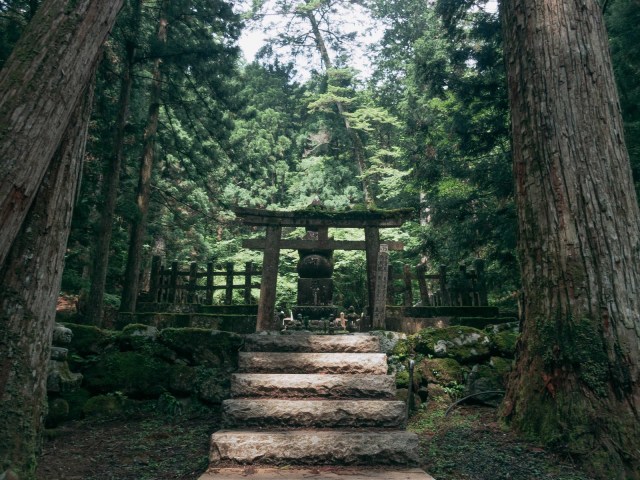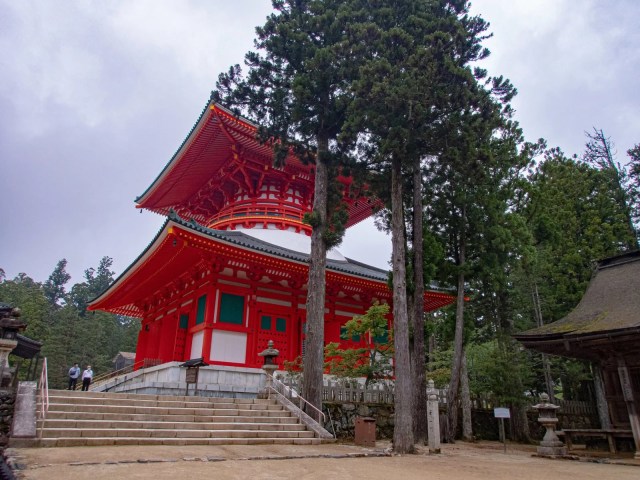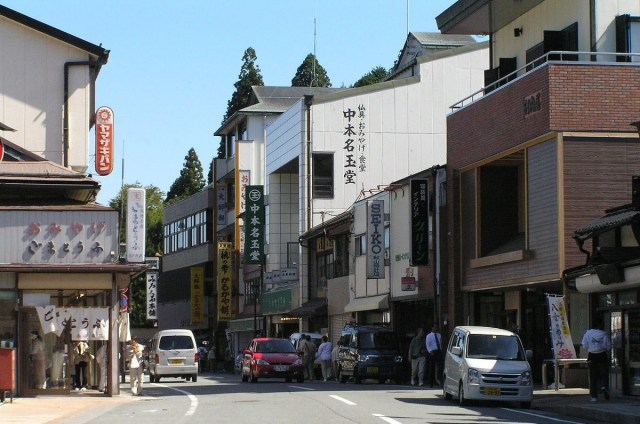
Pilgrimage town of less than 3,000 residents received almost 1.4 million tourists last year.
People have been coming to Mt. Koya, also known as Koyasan, for centuries. Located in the Kii mountains of Wakayama Prefecture, Mt. Koya’s temple complexes were built over a thousand years ago, and both pilgrims and outdoorsmen have been hiking the trails that connect them ever since.
In recent years, though, Mt. Koya, and the town of Koya in which it’s located, have been seeing more visitors than ever before. In 2004, UNESCO designated the “Sacred Sites and Pilgrimage Routes in the Kii Mountain Range” as a World Heritage Site, and Koya is increasingly becoming a standard addition to many foreign inbound tourists’ central Japan itineraries. Interest from international travelers also often resparks interest from domestic travelers in Japan as well, as we’ve seen happen in Tokyo’s Tsukiji and Akihabara neighborhoods.
It’s looking like those visitors to Koya, though, are going to have to start paying a special tax in the next few years. That’s because while the number of tourists keeps increasing, the opposite is happening to the number of residents.
Currently, Koya has a population of around 2,600, down from a peak of roughly 9,000 around 50 years ago. In 2023, though, approximately 1,397,000 travelers came through the town. Around 228,000 of them stayed the night, with some 93,900 being inbound travelers from overseas.
▼ Mt. Koya’s Kongobuji Temple
Koya was never a very big town to start with, and all those visitors are putting a strain on the local infrastructure, according to mayor Yoshiya Hirano. Costs are increasing for maintenance of public restrooms and the sewage system, as well as waste management and trash and litter removal. Even emergency service budgets are being stretched, with the number of ambulance dispatches for tourists in need of medical attention exceeding those for local residents.
With the town’s small population not even being as big as it used to be, it’s becoming increasingly difficult to maintain infrastructure with current tax revenues, Hirano says. “The fact of the matter is that residents are shouldering a large burden in order to sustain the town’s infrastructure,” says the mayor, leading to his call for a visitor’s tax to be instated.
The plan follows recent decisions by local authorities to begin charging entrance fees for Mt. Fuji’s most popular hiking trail and to levy a visitor’s tax at Miyajima island in Hiroshima Prefecture.
Ostensibly, the increase in tourist traffic to Koya should already be increasing the town’s tax revenues, as travelers make use of local businesses and pay into sales/consumption taxes. However, unlike recent tourism spikes in more developed areas such as Kyoto, Koya doesn’t present all that many spending opportunities. As a small, rural town, many of its shops and restaurants are simple and relatively low-priced. Mt. Koya and its trails are also fairly easy to do as a day-trip from Osaka, or even Kyoto, as evidenced by the million-plus tourists who visited last year and didn’t spend the night, meaning their hotel expenditures didn’t trickle down into Koya’s tax coffers either. And while some temples charge admission, the trails themselves are free to hike.
▼ Koya
Because of all that, Koya is in sort of a unique situation in which it’s receiving a lot of visitors who likely arrive in town having already eaten breakfast, don’t do much shopping, and head back to Osaka/Kyoto for dinner and their hotel stay, minimizing their economic contribution to the town. Those factors are also likely why the visitor’s tax would be collected from overnight guests and daytrippers alike.
Hirano stresses, though, that his push for a visitor’s tax is not an attempt to keep visitors away. “Koyasan is a wonderful place, and we are happy to have many people visit. With the declining population, though, it has become difficult to maintain Koyasan with the contributions of residents alone, and so we must ask everyone to help out.”
Specifics of the tax, such as how much it would be and how it would be collected, are yet to be sorted, but the plan is for it to go into effect in the spring of 2028.
Source: Sankei Shimbun
Top image: Pakutaso
Insert images: Pakutaso, Wikipedia/Akiyoshi’s Room~commonswiki
● Want to hear about SoraNews24’s latest articles as soon as they’re published? Follow us on Facebook and Twitter!



 Real Buddhist monk shows off hot (and sweet) EDM dance moves in Mount Koya video
Real Buddhist monk shows off hot (and sweet) EDM dance moves in Mount Koya video Japanese prefectural governor wants foreign tourists to pay special extra fee
Japanese prefectural governor wants foreign tourists to pay special extra fee “Foreign travelers are Japan’s guests” – Governor against charging tourists more than locals
“Foreign travelers are Japan’s guests” – Governor against charging tourists more than locals Mt. Fuji is officially closed for the year
Mt. Fuji is officially closed for the year 5 places in Japan to visit in 2015
5 places in Japan to visit in 2015 How to order snacks on a Shinkansen bullet train in Japan
How to order snacks on a Shinkansen bullet train in Japan Hello, cosmetics! Clinique teams up with Hello Kitty this summer for first-time collaboration
Hello, cosmetics! Clinique teams up with Hello Kitty this summer for first-time collaboration Burger King Japan suddenly adds Dr. Pepper and Dr. Pepper floats to its menu nationwide
Burger King Japan suddenly adds Dr. Pepper and Dr. Pepper floats to its menu nationwide Demon Slayer: Kimetsu no Yaiba gets new roller coaster attractions and food at Universal Studios Japan
Demon Slayer: Kimetsu no Yaiba gets new roller coaster attractions and food at Universal Studios Japan New samurai glasses are Japan’s latest weird must-have souvenir
New samurai glasses are Japan’s latest weird must-have souvenir New Nintendo Lego kit is a beautiful piece of moving pixel art of Mario and Yoshi【Photos】
New Nintendo Lego kit is a beautiful piece of moving pixel art of Mario and Yoshi【Photos】 Nintendo history you can feel – Super NES, N64, and GameCube controllers become capsule toys
Nintendo history you can feel – Super NES, N64, and GameCube controllers become capsule toys Japan’s new difficult-to-drink-from beer glass protects your liver, but it’s a brutal experience
Japan’s new difficult-to-drink-from beer glass protects your liver, but it’s a brutal experience 10 things you should buy at 7-Eleven in Japan
10 things you should buy at 7-Eleven in Japan McDonald’s adds new watermelon frappe and fruity macaron to its menu in Japan
McDonald’s adds new watermelon frappe and fruity macaron to its menu in Japan “The most Delicious Cup Noodle in history” – Japan’s French Cup Noodle wins our heart【Taste test】
“The most Delicious Cup Noodle in history” – Japan’s French Cup Noodle wins our heart【Taste test】 Starbucks releases a cute Frappuccino and Unicorn Cake…but not in Japan
Starbucks releases a cute Frappuccino and Unicorn Cake…but not in Japan Kyoto Tower mascot termination reveals dark side behind cute Japanese characters
Kyoto Tower mascot termination reveals dark side behind cute Japanese characters McDonald’s Japan’s Soft Twist Tower: A phantom ice cream only sold at select branches
McDonald’s Japan’s Soft Twist Tower: A phantom ice cream only sold at select branches Yabai Ramen: What makes this Japanese ramen so dangerous?
Yabai Ramen: What makes this Japanese ramen so dangerous? Finally! Nintendo Japan expands Switch 8-bit controller sales to everybody, Online member or not
Finally! Nintendo Japan expands Switch 8-bit controller sales to everybody, Online member or not Japanese government wants to build luxury resorts in all national parks for foreign tourists
Japanese government wants to build luxury resorts in all national parks for foreign tourists To combat declining birth rate, Japan to begin offering “Breeding Visas” to foreigners
To combat declining birth rate, Japan to begin offering “Breeding Visas” to foreigners Studio Ghibli releases anime heroine cosplay dresses that are super comfy to wear
Studio Ghibli releases anime heroine cosplay dresses that are super comfy to wear Woman charged for driving suitcase without a license in Osaka
Woman charged for driving suitcase without a license in Osaka Studio Ghibli unveils My Neighbour Totoro miniature house model
Studio Ghibli unveils My Neighbour Totoro miniature house model Kyoto experiencing problems with foreign tourists not paying for bus fares, but not on purpose
Kyoto experiencing problems with foreign tourists not paying for bus fares, but not on purpose Fighting mild hunger with a Japanese soda that turns into jelly in the stomach【Taste test】
Fighting mild hunger with a Japanese soda that turns into jelly in the stomach【Taste test】 Studio Ghibli’s Howl’s Moving Castle tapestry unveiled in Japan for first time
Studio Ghibli’s Howl’s Moving Castle tapestry unveiled in Japan for first time McDonald’s new Happy Meals offer up cute and practical Sanrio lifestyle goods
McDonald’s new Happy Meals offer up cute and practical Sanrio lifestyle goods Sales of Japan’s most convenient train ticket/shopping payment cards suspended indefinitely
Sales of Japan’s most convenient train ticket/shopping payment cards suspended indefinitely Sold-out Studio Ghibli desktop humidifiers are back so Totoro can help you through the dry season
Sold-out Studio Ghibli desktop humidifiers are back so Totoro can help you through the dry season Japanese government to make first change to romanization spelling rules since the 1950s
Japanese government to make first change to romanization spelling rules since the 1950s Foreigner’s request for help in Tokyo makes us sad for the state of society
Foreigner’s request for help in Tokyo makes us sad for the state of society Ghibli founders Toshio Suzuki and Hayao Miyazaki contribute to Japanese whisky Totoro label design
Ghibli founders Toshio Suzuki and Hayao Miyazaki contribute to Japanese whisky Totoro label design Doraemon found buried at sea as scene from 1993 anime becomes real life【Photos】
Doraemon found buried at sea as scene from 1993 anime becomes real life【Photos】 Tokyo’s most famous Starbucks is closed
Tokyo’s most famous Starbucks is closed Princesses, fruits, and blacksmiths: Study reveals the 30 most unusual family names in Japan
Princesses, fruits, and blacksmiths: Study reveals the 30 most unusual family names in Japan Japanese tourist center asks small-penised travelers to not make a mess in the bathroom
Japanese tourist center asks small-penised travelers to not make a mess in the bathroom Mount Fuji has become so congested with tourists that it has reached breaking point
Mount Fuji has become so congested with tourists that it has reached breaking point Barricades placed on Mt. Fuji as mountain officially closes because of coronavirus【Video】
Barricades placed on Mt. Fuji as mountain officially closes because of coronavirus【Video】 Beware the rise of overpriced “Inbound Don” at tourist spots in Japan
Beware the rise of overpriced “Inbound Don” at tourist spots in Japan Japan’s beautiful “suicide forest” sees increase in sightseers as it tries to shake its dark image
Japan’s beautiful “suicide forest” sees increase in sightseers as it tries to shake its dark image Hiking restrictions result in huge drop in climbing accidents, with zero on Mt. Fuji
Hiking restrictions result in huge drop in climbing accidents, with zero on Mt. Fuji Japanese government wants to build luxury resorts in all national parks for foreign tourists
Japanese government wants to build luxury resorts in all national parks for foreign tourists Huge price hike for Japan Rail Pass triggers huge drop in foreign travelers who’ll buy it【Survey】
Huge price hike for Japan Rail Pass triggers huge drop in foreign travelers who’ll buy it【Survey】 Tourist ban now in effect in Kyoto’s Gion geisha district…but are visitors obeying the rules?
Tourist ban now in effect in Kyoto’s Gion geisha district…but are visitors obeying the rules? Dear Hikers: Stop pooping on Mt. Fuji if you want it to keep its UNESCO status
Dear Hikers: Stop pooping on Mt. Fuji if you want it to keep its UNESCO status Kyoto tourist crowds disappearing due to coronavirus outbreak, creating travel crisis/opportunity
Kyoto tourist crowds disappearing due to coronavirus outbreak, creating travel crisis/opportunity Nara’s “deer cookie” rice crackers get their first price increase in 28 years
Nara’s “deer cookie” rice crackers get their first price increase in 28 years Three people die on Mt. Fuji less than 24 hours after official start of climbing season
Three people die on Mt. Fuji less than 24 hours after official start of climbing season Kyoto study finds nearly 500 translation errors for foreign tourists, new guidelines released
Kyoto study finds nearly 500 translation errors for foreign tourists, new guidelines released
Leave a Reply